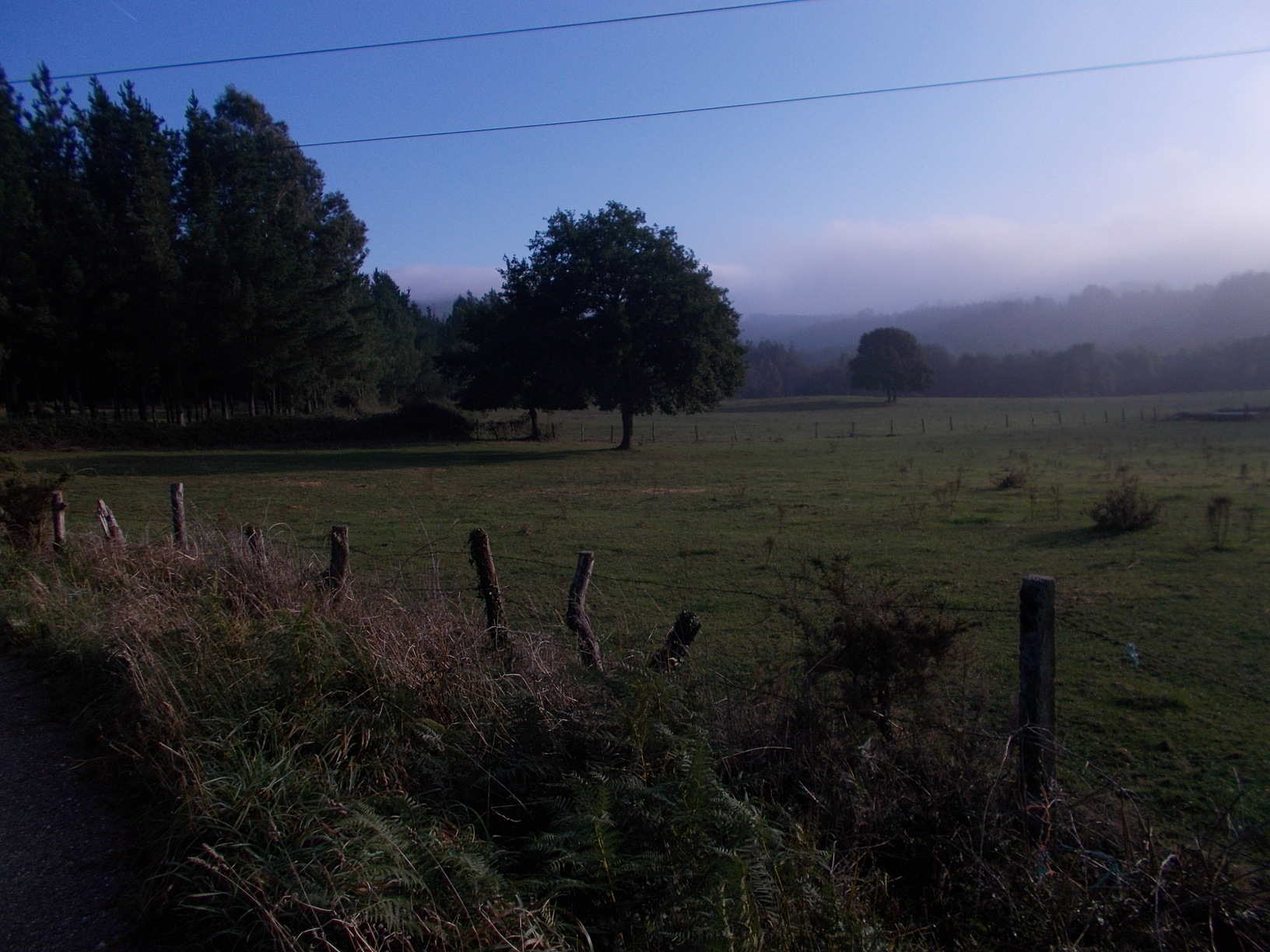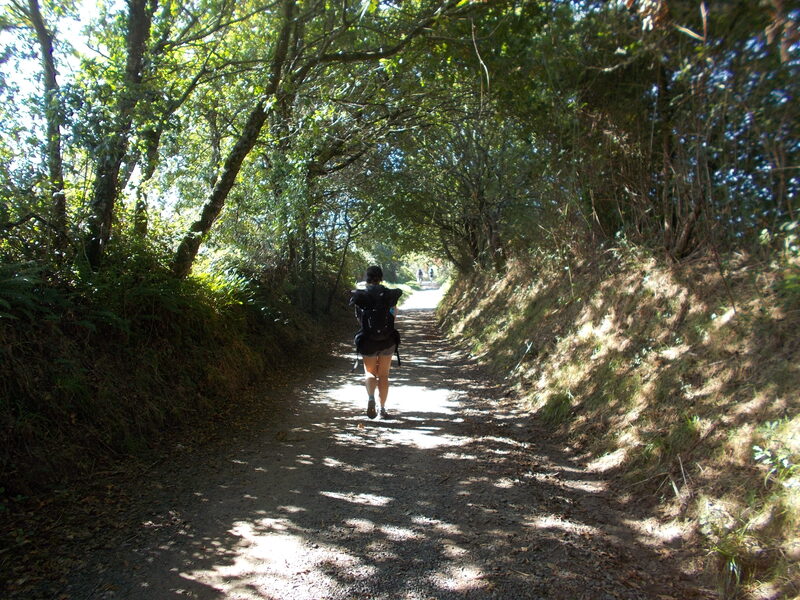
Basic Details
- Starting point: The city center of Grado (two pilgrim hostels and all services).
- Ending point: The albergue of Bodenaya (one of the most famous pilgrim hostels on all Caminos, donation based. If you do not feel like walking such a long distance you can also opt for staying in Salas, a nice town of roughly 5,000 inhabitants,with 4 pilgrim hostels and all services, 8 kilometers before Bodenaya).
- Availability of alternative routes: Not at all, there aren’t any alternative trails or routes, marked or unmarked, leading from Grado to Salas and Bodenaya.
- Distance: 30.5 km (download GPS here)
- Link to online map: Official camino route: here.
- Elevation difference: + 1100m, – 540m.
- Difficulty score: 4/5.
- Beauty score: 4/5.
- Terrain/asphalt: 55%/45%. The paved and unpaved sections alternate nicely on this stage. Once you get a bit tired from asphalt walking you’ll always hit some nice walking path and the other way around.
- Next stage: Camino Primitivo, Stage no. 3, Bodenaya – Borres.
- Previous stage: Camimo Primitivo, Stage no. 1, Oviedo – Grado.
Elevation profile for the route

– A pretty interesting profile, with a long but gradual climb at the beginning, followed by a gradual and sometimes steep descent, and then, basically the last 14 kilometers is a long but gradual and mild climb, all the way to Bodenaya, just flattening at the very end of the day. Some pilgrims get scared with the daily accumulated ascent of 1,100 meters. You have to realize though that while long, the climbs aren’t steep, and the terrain isn’t technical, and hence the stage isn’t as difficult as it may look “on the paper”. Still it isn’t easy and on a hot day the last 8 kilometers from Salas to Bodenaya will test you both physically and mentally. As an alternative you can stay in Salas, which makes this stage way easier, but adds to the difficulty of the next day.
Advanced info about the stage
- Trail marking: Overall really good. The only tricky part is in the zone of Cornellana (11 kilometers after Grado), where they sometimes change the marking of the way due to mining and building activities. However, it is typically well signposted. In such zones it is important that you follow the yellow arrows and don’t stubbornly stick to your GPX or mapping application information, since temporarily the Camino may follow a completely different route, and there will be fences and stuff if you follow the way from the map.
- Natural places worth seeing: The nicest part is definitely the part when you follow the river Nonaya, where nice natural path alternates with paved roads. The river accompanies you for a big part of today’s walk, and the high point is definitely the waterfall Cascada de Noyana (you can see the picture in the gallery below). It is just a very small detour, 100 meters, and well signposted. The waterfall changes over the year, having most water in late winter and spring, but it is definitely worth the short detour year-round.
- Historical, architectural, and culinary places worth seeing: This stage offers a lot for history and architecture lovers, and I will try to point out at least the best things you can see on today’s walk:
- Monastery of San Salvador de Cornellana, 11 km from Grado, location on Google maps here. The UNESCO world heritage site, this complex of monastic buildings, dating back to 11th century, is impressive from both outside and inside. What’s more, the town even runs a donation-based pilgrim hostel within the premises of the monastery, and you can stay for a night there (if you plan your stages on the Camino differently).
- The old center of Salas, 22km from Grado, and place where most pilgrims who do not continue to Bodenaya/Espina stay for the night. This wonderfully-preserved town is virtually packed with historical buildings and palaces, and you can just marvel at one building after another while walking around the town center. Again, no detour is needed, since the town is directly on the Camino.
- Two antique bridges between Salas and Bodenaya, one of them right on the Camino. Not particularly well preserved but they maintain their authenticity, and are definitely worth a look.
- Camping/bivouac options on this stage: In general I do not recommend camping on this stage, for a simple reason: there are simply too many nice albergues in the zone :). What’s more, most of them are donation based, hence if you carry a tent because you are on a budget, you do not have to worry about this–just leave as much as you can afford, and enjoy a nice hot shower and a communal dinner. However, if you decide to camp nevertheless, for whatever reason, you’ll definitely find some spots where nobody will bother you at night. A few I can recommend:
- The forested zone around Iglesia de San Martin, 1 km above Salas, outside of the camino. The forested area is intersected with small roads and meadows, and looking around you will find a fitting spot. It is ideal also because it is close to Salas, a place with all services, so you can buy your provisions for the night in the grocery store (or eat in the restaurant), and then just walk and camp in a fitting spot near this nice church.
- The zone of the Noyana river, climbing from Salas in the direction of Bodenaya. You will find a couple of decent (and flat) spots along the path. Sure, this path is traversed by many pilgrims and locals, but if you arrive here in the evening and find a spot that’s at least a bit protected from the eyes of the passersby, you’ll be safe and can fall asleep listening to the river Noyana.
- Dog friendly score: 5/5. An excellent stage for a dog, with water always nearby, lot of shade, roads that aren’t busy, excellent natural water fountains, lot of walking on natural paths, diversity, and plenty of pilgrim hostels that accept dogs. The albergue in Bodenaya does not accept dogs, but you will find hostels that do accept them in Cornellana (km 12), Salas (km 22), and also Espina (1 kilometer after Bodenaya). Your beloved companion will enjoy this stage a lot. Maybe even more than you :).
- Special remarks: The last climb from Salas to Bodenaya may look brutal on the map, but it isn’t as hard as it seems. First of all, it is very gradual, with the grade of climb never exceeding 10%. And secondly and more importantly for Spain, the majority of the climb is in shade, which helps a lot on hot summer and early autumn days. In my opinion it belongs to the nicest parts of Camino Primitivo, and I hope you will enjoy it.
Pictures from the stage
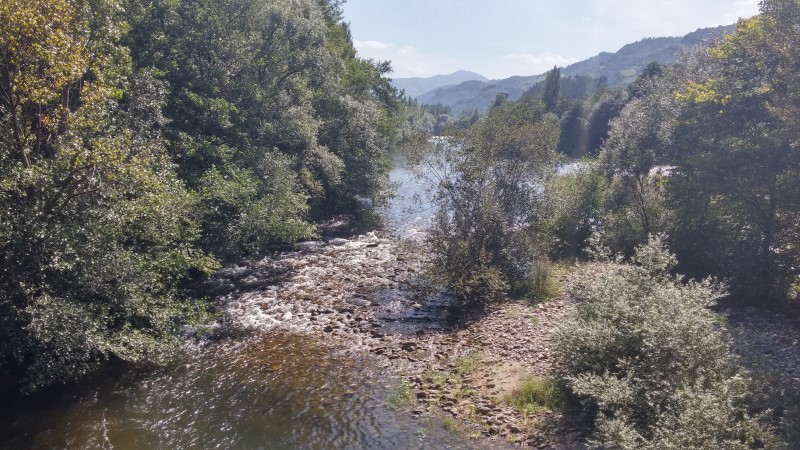 – You will spend a big part of the day walking close to the river “Rio Nonaya”, crossing it (over the bridge :)) on several occasions. Such moments are perfect for relaxing a bit, trying to find the truth of life in the way it flows, or at least for taking a nice picture like this one.
– You will spend a big part of the day walking close to the river “Rio Nonaya”, crossing it (over the bridge :)) on several occasions. Such moments are perfect for relaxing a bit, trying to find the truth of life in the way it flows, or at least for taking a nice picture like this one.
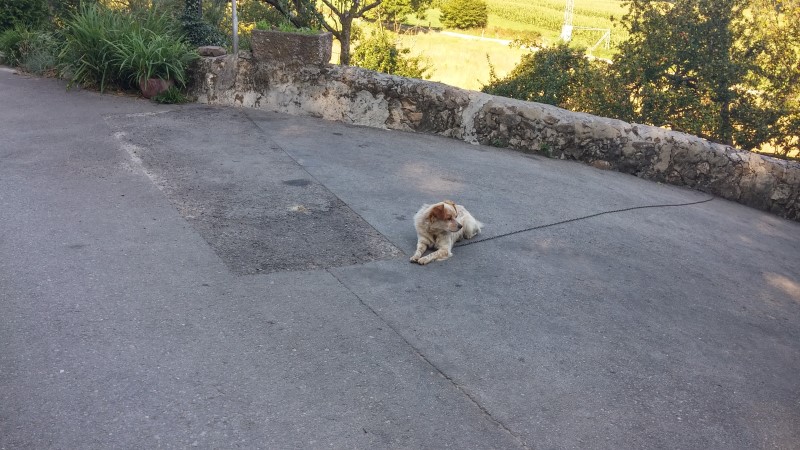 – Another beautiful and relaxed doggy on the road to Santiago.
– Another beautiful and relaxed doggy on the road to Santiago.
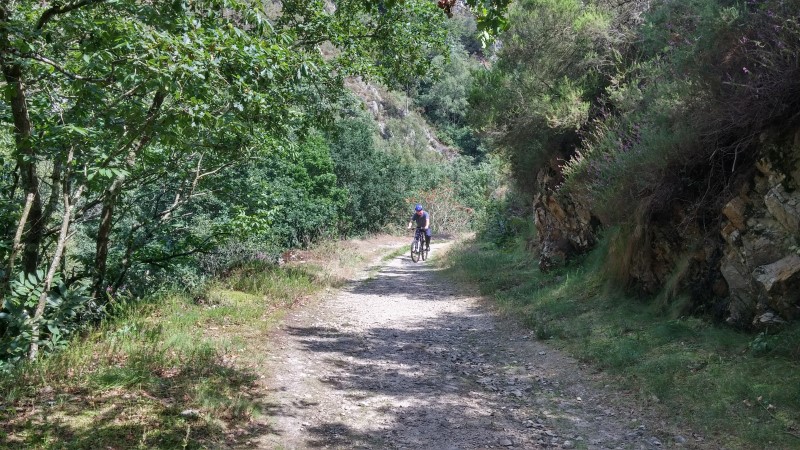 – I met this cyclist with Asian origins on my way, and couldn’t figure out whether he was a pilgrim or not. He didn’t have any luggage, but then he could have had it transported (yeah, the backpack transport service exists also on Camino Primitivo), and if he wasn’t a pilgrim I could not figure out what he would be doing in this part of the world :).
– I met this cyclist with Asian origins on my way, and couldn’t figure out whether he was a pilgrim or not. He didn’t have any luggage, but then he could have had it transported (yeah, the backpack transport service exists also on Camino Primitivo), and if he wasn’t a pilgrim I could not figure out what he would be doing in this part of the world :).
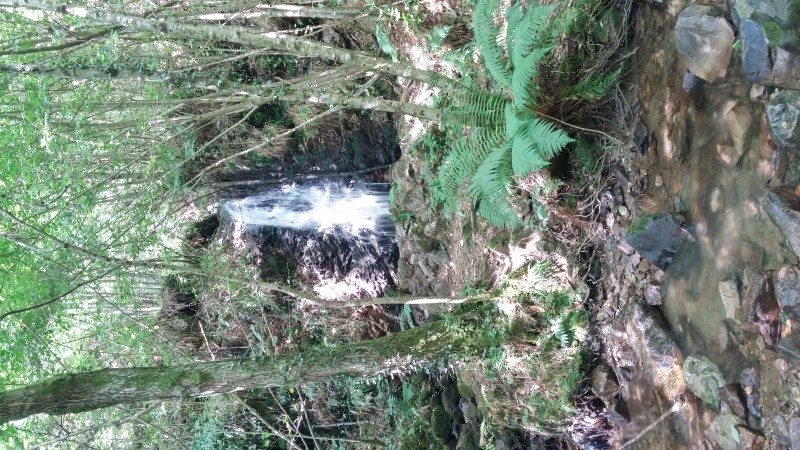 – A smaller waterfall “Cascada de Noyana“on your way. There are many magical waterfalls in Spain (and some pretty big too), but they aren’t on the Caminos (with an exception of maybe two or three, on Camino Olvidado for example). Hence we have to be content even with smaller ones 🙂 Where’s water there’s life…
– A smaller waterfall “Cascada de Noyana“on your way. There are many magical waterfalls in Spain (and some pretty big too), but they aren’t on the Caminos (with an exception of maybe two or three, on Camino Olvidado for example). Hence we have to be content even with smaller ones 🙂 Where’s water there’s life…
Few tips at the end
- The albergue in Bodenaya, one of the most famous pilgrim hostels on all Caminos, is a great place to stay. There is just one problem–the number of beds. They have only 10 beds, and it is better to make a reservation in advance, especially if you really want to stay there. If you do not get a bed, however, it isn’t a huge issue, since just in one extra kilometer you will reach a place called La Espina, where you will fine three pilgrim albergues (two of them also “donativos“) . While they do not have the charm and reputation of the albergue in Bodenaya, they are definitely good enough to stay for a night on your pilgrimage.
Next/Previous Stage
- Next stage: Camino Primitivo, Stage no. 3, Bodenaya – Borres.
- Previous stage: Camimo Primitivo, Stage no. 1, Oviedo – Grado.
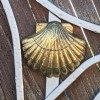



![Ultralight Packing List for Camino de Santiago [2025 Edition]](https://caminolovers.com/wp-content/uploads/2022/03/altra-shoes-640-x-480.jpg)

